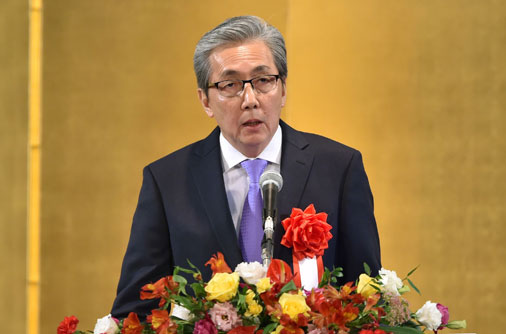




As China’s economic growth waned in 2015, the economies of virtually all Southeast Asian countries bore the brunt. Despite some uncertainty, most are anticipating a better 2016 and are hoping for a boost from the official launch of the Asean Economic Community (AEC), which came into effect on December 31st, 2015.
Uncertainty over China, the biggest export market for resources and commodities from the region, and downside pressure from declining commodity prices, are both still casting shadows on the 10 members of Asean. The Asian Development Bank (ADB) has cut Southeast Asia's growth rate, but still expects it to be a bit stronger in 2016 at 4.9 per cent compared with the 4.4 per cent estimated for 2015.
“One bright light for Asean countries is the AEC,” announced Francis Tan, senior economist at Singapore-based United Overseas Bank (UOB). “And this will not be a one-year good story, but will benefit the region for the next couple of years.”
The effects of the AEC - which set forth an ambitious goal of developing Asean into a single market and production base with free flow of goods, services and investments, as well as free flow of capital and skilled labour - should first be visible in the manufacturing sector. Emerging markets in the region are expected to see high growth this year. Myanmar tops the list, projected by the International Monetary Fund (IMF) to grow 8.4% in 2016, followed by Laos with an expansion rate of 8% and Cambodia with 7.2%.
As for Thailand, although the country was widely expected to rebound after a string of economic issues following the military coup in May 2014, concerns remain that the kingdom’s household debt-to-GDP ratio is too high and that it could lead to curbs in domestic consumption. According to Deputy Prime Minister Somkid Jatusripitak Thailand's economic growth should accelerate to 3.5% in 2016, however the IMF forecasts a growth rate of only 3.2%.
Even in Singapore, the most advanced economy in the region and the one which always outperforms its peers, forecasts are cautious. With Singapore’s high exposure to China's trade, and sluggish growth in manufacturing, analysts have cut the city-state's GDP growth for 2016.
Despite sluggish growth rates most experts agree that the AEC will bring benefits to all participating nations. However experts also agree that the AEC can truly become a single market and production base only when factors of production can flow freely among the member states and non-tariff barriers are identified and eliminated. As well, the ‘Asean Single Window’ must be put into effect soon, with supporting legal infrastructure and necessary legislation at the regional and national levels. Finally, the AEC also should not forget the role of SMEs and farmers, who are the lifeblood of the Asean economy and key to its long-term resilience
A competitive and dynamic AEC will need to be connected. Enhanced Asean connectivity - a Thai initiative since 2009 - needs to be translated into effective air, sea, and land links across Southeast Asia. Whether that means railway projects linking Singapore to southern China, maritime routes through the Malacca Straits and onward to the Indian Ocean or South China Sea, or more efficient air links, further development of regional connectivity will no doubt facilitate the improved movement of people, goods and services across the region.